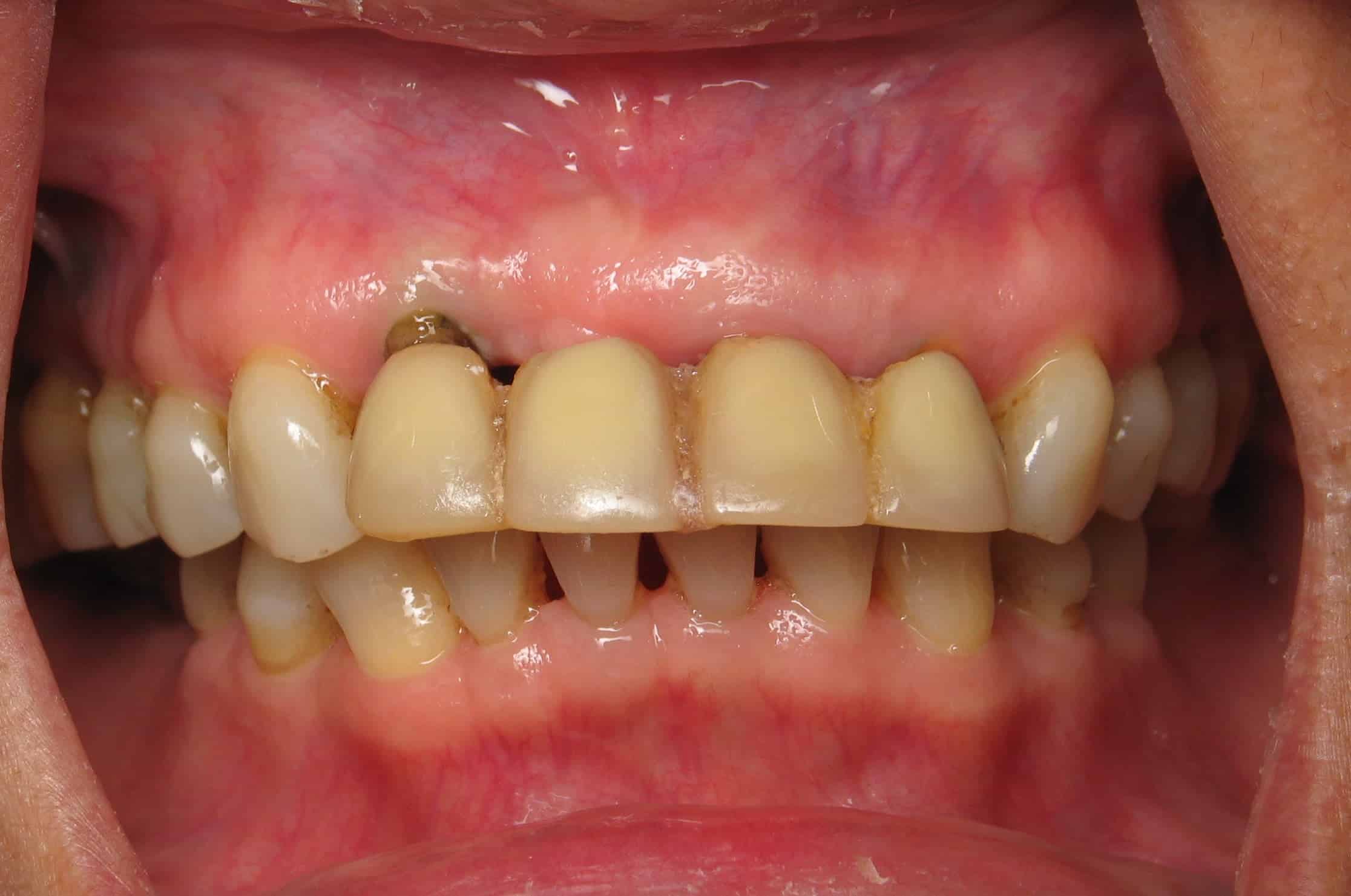When a tooth is lost through decay, trauma, or periodontal disease, the best way to replace it today is with a dental implant. If three to four front teeth are missing, two dental implants and a bridge may be the best option for cosmetic reasons so that the teeth look real.
Most conventional bridges use porcelain fused to metal in fabrication. Recent advances in ceramic technology have resulted in metal-fee bridges to replace missing teeth. No matter what materials are used, a dental bridge consists of anchor implants (abutments) on either side of the missing tooth space with a false tooth suspended between them.
The false tooth (or pontic) is suspended over the space of the missing tooth. In many cases, this type of arrangement is sufficient to provide the restoration of form, function, and esthetics that are required, especially if this is a back tooth.
The gum tissue contacting side of the pontic is shaped to “sit on” or “lap” the soft tissue ridge, similar to a saddle thrown over the back of a horse. This type of pontic form is called a ridge lap pontic. A later alteration of this design is called a modified ridge lap. In this case the saddle is placed on the horse, but one side is picked up to the height of the horse’s back so that it cannot touch the horse. The advantage of this design is that food has much less of a tendency to be trapped under the pontic and the patient could more easily clean beneath the false tooth.
Here are two examples of this type of pontic which do NOT look good:
Until a few years ago, all pontics were constructed in this fashion and most dentists still do this!
A radically different, much more cosmetic pontic design is the way I try to make all bridges. It is called the ovate (egg-shaped) pontic.
Unlike the ridge lap design where the pontic is butted up against the gum, in the ovate pontic, a depression is created in the gum ridge that mimics the shape of the natural root and crown. The false tooth is then made to appear as if it is "growing" out of the gum tissue, and not just resting on top of it. When done well, it is difficult to see which tooth is real and which tooth is a replacement.
This ovate pontic requires much more skill and planning. The ovate pontic shape must be prepared into the bed of gum. This simple, minimally invasive surgical procedure creates the egg-shaped depression in the tissue ridge. After this area is allowed to heal in the correct shape, guided by the form of the temporary bridge, the impressions are taken for the construction of the final bridge.
The best way to get an ovate pontic is to make it immediately after the tooth is extracted to prevent bone loss.
If a ridge is badly deformed by the extraction of the tooth or by ridge shrinkage, an additional surgical procedure (ridge augmentation) may be necessary to build out the ridge prior to shaping it for the ovate pontic. The ridge can be built with a gum graft taken from your palate…A procedure I do weekly in my Burbank practice. This may add cost and time to the construction of the bridge.
The ovate pontic will give you maximum cosmetic improvement, look the most natural, and be the easiest to clean. If you have a high lip line, showing much of your teeth when you talk or smile, or demand the best esthetics available, then you need to consider the ovate pontic.
After examining you, I will evaluate your gum contour and smile line and determine what would be involved in creating the ovate pontic. This is the design I favor the most.
Please understand that if the area has been missing a tooth for a long time, or if the area has shrunk from the normal position so that the normal architecture is destroyed, it will take a little more effort to create the ovate pontic but it is worth it!
Ramsey A. Amin, D.D.S.
Diplomate of the American Board of Oral Implantology /Implant Dentistry
Burbank, California


If you have a ‘gummy’ smile, I would guess this would be excellent. I myself do not show much except about half the tooth when I smile, so it would be overkill for me. 🙂 Looked very nice though.
Dr. Amin, Your site is well done. I have a question.
I have 6 teeth in front on top and 6 on the bottom and one 3 tooth bridge and a tooth on my bottom right. Rest are all gone. I am wondering if I should get all implants or 3 implant bridges , one each for left top, left bottom and right top jaw? Or something else. what precautions I need dentist here to take? I live in Houston, if you have some recommendation here, I will appreciate it.
That looks way more real than the old fashioned way that most dentists do!
Thanks Eugenio!
Ramsey A. Amin, D.D.S.
Diplomate of the American Board of Oral Implantology /Implant Dentistry
Fellow-American Academy of Implant Dentistry
what is your view about hygienic pontic?What is the cleansibility and gingival health consideration of Ovate pontic.
Wow. This really makes the teeth look more real!